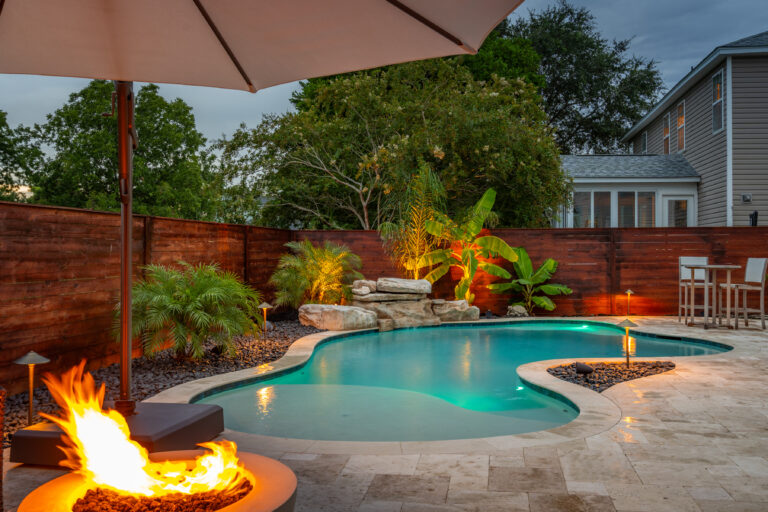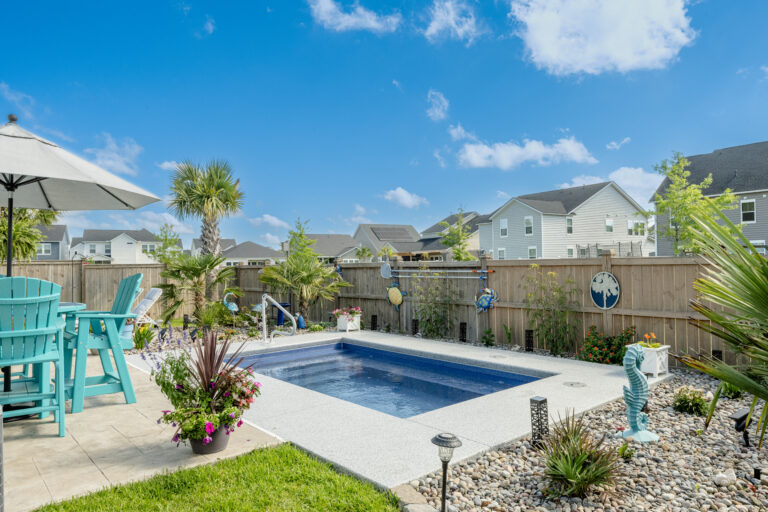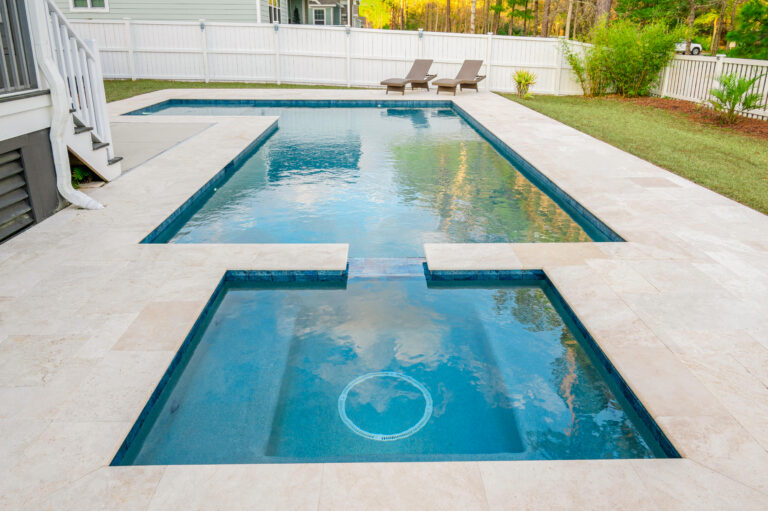When choosing a material for your pool deck, it’s important to consider factors such as durability, maintenance, safety, aesthetics, budget, installation and climate, to make an informed decision that will lead to a long-lasting and beautiful addition to your backyard oasis.
Welcome to our guide on creating the perfect pool deck. If you’re planning to install a new pool in your backyard, you know that the pool deck is just as important as the pool itself. Not only does it provide a functional space for lounging and entertaining, but it also sets the tone for the overall aesthetic of your outdoor living area.
With so many options to choose from, it can be overwhelming to decide on the best material for your pool deck. In this blog post, we will take a look at the top materials used for pool decks and discuss the pros and cons of each. We will also provide you with important factors to consider when making your decision, so you can have the perfect addition to your backyard oasis.
Table of Contents
What to Consider
When choosing a material for your pool deck, there are several key considerations to keep in mind. These include:
- Durability: Make sure the material you choose can withstand heavy use, weather conditions and is able to last long in your specific climate.
- Maintenance: Some materials require more maintenance than others, so consider how much time and effort you are willing to put into maintaining your pool deck.
- Safety: Make sure the material you choose is slip-resistant and meets all safety and building codes.
- Aesthetics: Consider the overall design aesthetic of your backyard and how the material will complement it.
- Budget: Different materials have different price points, so consider your budget and choose a material that fits within it.
- Installation: Consider your options for professional installation and the complexity and cost of the installation process of the material you choose.
- Climate: Some materials may not be suitable for all climates. Consider how the material will hold up in your specific climate and weather conditions.
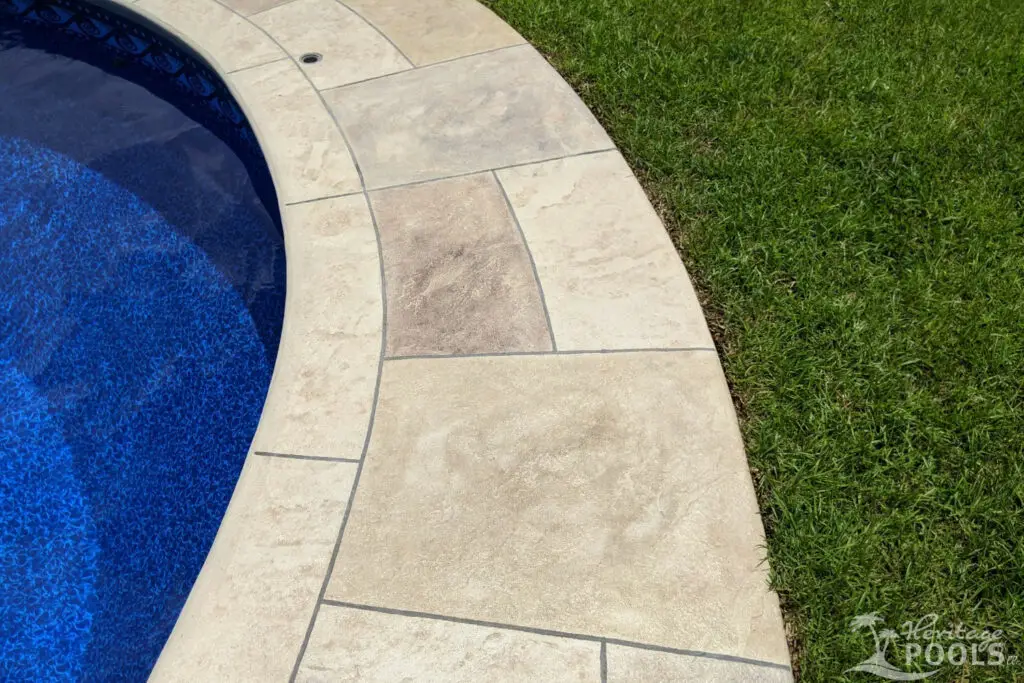
Concrete
Concrete is one of the most popular materials for pool decks, and for good reason. It is durable, low maintenance, and customizable to fit any design aesthetic. Additionally, it can be stamped, stained, or painted to add an extra level of visual interest.
One of the biggest advantages of concrete is its ability to withstand heavy use and harsh weather conditions. It can also be easily repaired if it is damaged. However, concrete can be prone to cracking over time and can become hot to the touch in direct sunlight.
Pavers
Pavers are another popular option for pool decks. They are made of natural stone, brick, or concrete, and can be arranged in a variety of patterns and colors to create a unique and visually appealing surface. Pavers are also slip-resistant and can be used in combination with other materials to create a custom look.
However, pavers can be more expensive than concrete and may require more maintenance to keep them looking their best. They also can shift over time if not installed correctly and be prone to weeds growing in between them.
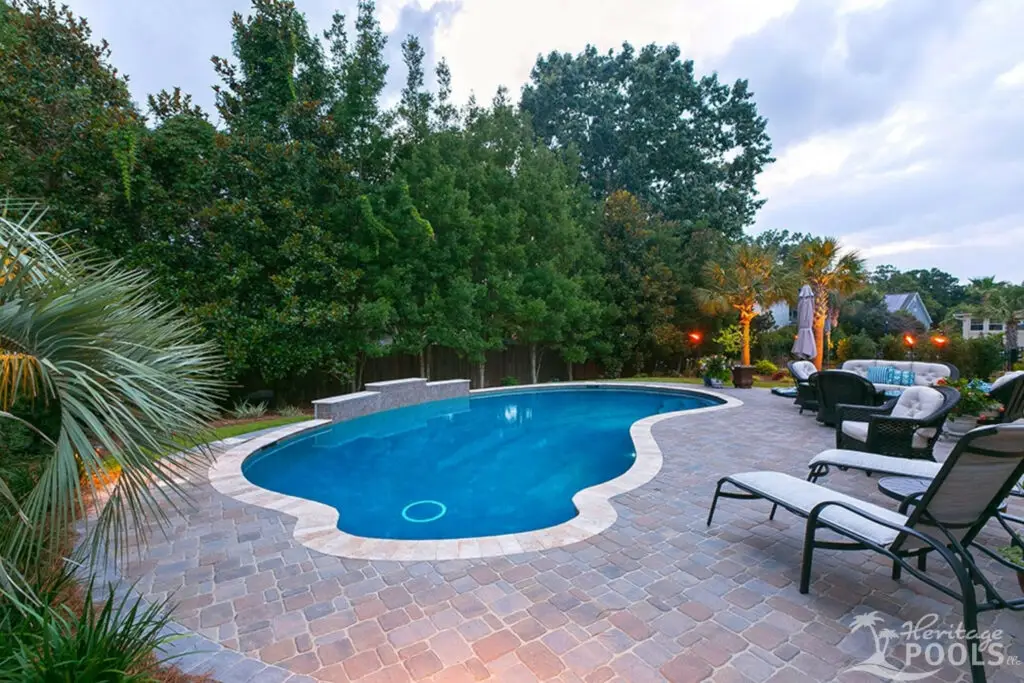
Stone
Natural stone is another material that can be used for pool decks. It is durable, beautiful, and adds a natural feel to the backyard. Additionally, it is slip-resistant and can withstand heavy use and weather.
Natural stone can be expensive and will require professional installation. It also can be heavy and difficult to work with, which can add to the overall cost.
Travertine
Travertine is a type of natural stone that is often used for pool decks. It is known for its unique pattern and color variations, which add visual interest to the surface. Travertine is also slip-resistant and can withstand heavy use and weather.
Like natural stone, travertine can be expensive and will require professional installation. It also can be prone to staining if not properly sealed.
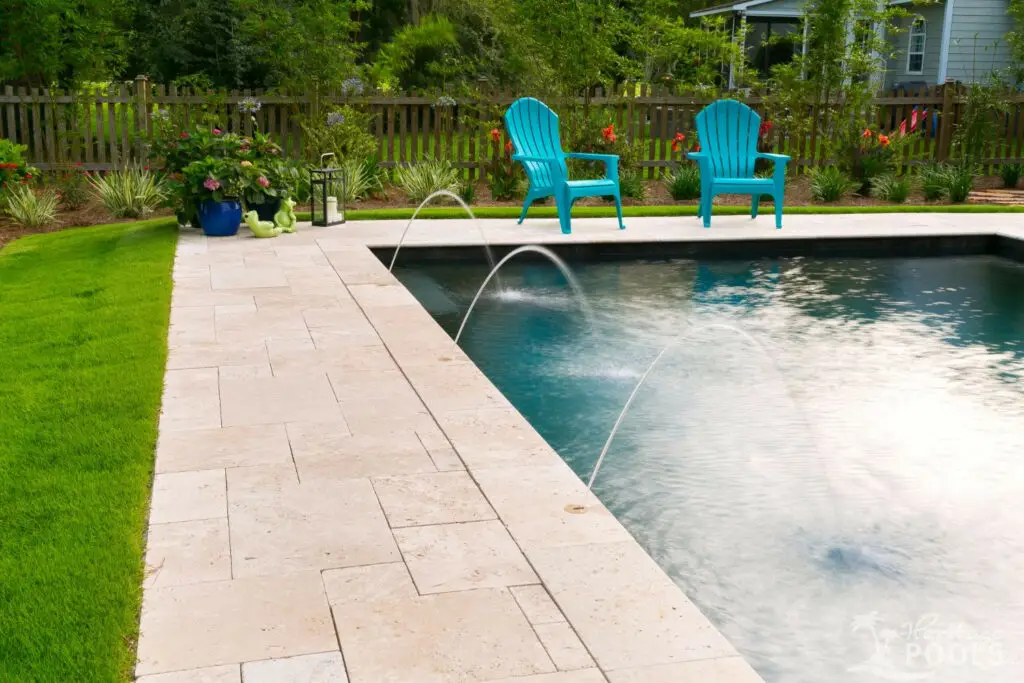
Brick
Brick is another option for pool decks, and it can add a rustic charm to the backyard. It is slip-resistant and can withstand heavy use and weather. Additionally, it can be customized to fit any design aesthetic.
Brick can be expensive and will require professional installation. It also can be prone to cracking over time.
Tile
Tile is a popular choice for pool decks, as it comes in a wide variety of colors, patterns, and materials. It can be used to create a custom look and is slip-resistant. Tile can be fragile and may require more maintenance to keep it looking its best. It also can be prone to cracking if the surface underneath is not perfectly level.
Wood
Wooden decks are not a common choice for pool decks, but they can add a natural and rustic feel to the backyard. Wooden decks are also slip-resistant and can be stained or painted to fit any design aesthetic. Wood is not suitable for all climates, and it can be prone to rotting, warping, and fading over time.
Artificial Turf
Artificial turf is a newer option for pool decks, and it can be used to create a low-maintenance and natural-looking surface. It is slip-resistant and can be used in combination with other materials to create a custom look. Additionally, it is easy to clean and can be more comfortable to walk on than other materials, especially in hot weather.
Artificial turf can be expensive to install and may not look as realistic as natural grass. It also may not be suitable for all climates and can be affected by heavy use and weather conditions.
Designing with Heritage Pools
There are many options to choose from when it comes to creating the perfect pool deck. Each material has its own set of pros and cons, and it’s important to consider factors such as durability, maintenance, and design aesthetic when making your decision. It’s also a good idea to consult with a professional to ensure that your pool deck is built to last and meets all safety and building codes. With the right material, your pool deck can be the perfect addition to your backyard oasis.
What are the Top 3 Materials Recommended for the Climate in Charleston, South Carolina?
Charleston, South Carolina has a humid subtropical climate, which means it experiences hot and humid summers, and mild winters. The area is known for its high humidity, which can make the heat feel even more intense during the summer months. The region also experiences occasional tropical storms and hurricanes during the hurricane season (June to November).
The top 3 materials recommended for the climate in Charleston, South Carolina are:
- Concrete: Durable, low-maintenance, and customizable, concrete can withstand heavy use and harsh weather conditions.
- Pavers: Made of natural stone, brick, or concrete, pavers offer a slip-resistant surface that can be arranged in a variety of patterns and colors.
- Travertine: A type of natural stone that is known for its unique pattern and color variations, travertine is slip-resistant and can withstand heavy use and weather.
